- Home
- Home Insulation
- Different Types of Wall Insulation
The Different Types of Wall Insulation:
A Comprehensive Guide.
Different types of wall insulation:
Understanding the different types of wall insulation available to you is essential, if you're to avoid potentially damaging the walls of your older property. It's not as important with newer homes, but it is still something that you should be familiar with.
Wall insulation is an essential component of every home's energy efficiency. It provides many benefits, such as reduced energy bills, improved comfort, and even soundproofing.
In this comprehensive guide, I’ll take a closer look at the different types of wall insulation available to you, and the factors you should consider when choosing the right insulation for your home.
How The Different Types of Wall Insulation Work:
Ok, I might be trying to teach my granny how to suck eggs here, but bear with me.
Wall insulation works by reducing the amount of heat that’s lost through the walls of your home. If chosen correctly it can keep your home warm in the winter and cool in the summer.
The insulation materials you choose work by trapping air in small pockets, which helps to slow down the transfer of heat through the walls. This helps to maintain a comfortable temperature in your home without the need for your boiler to run constantly.
Factors to consider when choosing wall insulation:
When choosing the right wall insulation for your home, there are several factors you should consider, such as the age of your property, R-value, ease of install, location of your home, cost and environmental impact.
- Age - believe it or not the age of your home will dictate what type od wall insulation you should add. Most homes in the UK that were built before the 1920’s will have solid walls. Whether they’re solid brick or stone it doesn’t really matter as these walls need to breath (stone walls mores than brick walls).
In order to retain the vapour permeability (breathability) of your walls you should be looking at natural insulation materials such as wood fibre as they’re breathable and can easily absorb and release water vapour without affecting their insulation performance. - R-value - The R-value is a measure of the insulation's resistance to heat flow. The higher the R-value, the more effective the insulation will be at preventing heat loss. However you need to remember R-values are calculated in lab conditions and most homes will fail to live up to these as they’re often poorly fitted. So any gaps around the insulation when fitted in your home will mean you won’t achieve anywhere near the stated R-value.
- Ease of the Install - as mentioned above, you could have the best performing insulation available, but if it’s installed badly with gaps around it (even small gaps), you won’t get the performance promised by the high R value. So it’s essential that the insulation is fitted well.
As an example, Rigid PIR boards (rigid foil backed insulation) has a higher R value than my personal favourite, wood fibre, but it is VERY difficult to fit without leaving gaps, whereas the wood fibre bats are compressible. So they can be cut larger than the gap they’re going into, compressed, installed and then allowed to expand, thus filling the area perfectly and no gaps anywhere.
I would argue that a well fitted wood fibre install, in the real world, would perform as well if not better than a typical PIR install, and it’s breathable whereas the PIR board is not!
- Location - This is more relevant if you have cavity walls that you want to fill. In this instance the location of your home can affect whether you should install cavity fill insulation or not. If your home is located in a very windy area, you may need to avoid filling your cavities. Location can also affect your choice of render or finish to be used on external insulation.
- Cost - The cost of insulation can also be a factor when choosing insulation for your walls. While some types of insulation may be more expensive than others, they may also provide better long-term savings in terms of energy costs and environmental considerations.
- Environmental impact - The environmental impact of the insulation material can also be a factor. The different types of wall insulation will obviously have different environmental impacts with man-made insulation having a larger impact that their natural counterparts, such as wood fibre etc.
Different Types of Wall Insulation for Solid Walls:
Solid walls, require insulation to be installed either on the inside or outside of the wall.
Internal wall insulation:
This involves adding insulation boards or batts to the interior surface of the main external walls of your home. It’s less expensive than external wall insulation but may result in a reduction of living space inside the home and you’ll also need to factor in other costs such as relocating radiator pipes and redecoration etc.
Materials used for internal wall insulation:
Traditionally, the most common materials used for internal wall insulation in the UK would be rigid insulation boards made of materials such as expanded polystyrene (EPS), extruded polystyrene (XPS), polyurethane foam, PIR boards or mineral wool, which is made from rock or glass fibres.
However none of these are breathable and they will struggle to release any water vapour that gets into them. So I would always suggest that a better method for installing internal insulation in older homes with solid walls, would be wood fibre insulation. This retains the breathability of the wall.
Benefits of internal wall insulation:
Internal wall insulation improves the energy efficiency and the sound insulation of your home without disrupting the exterior appearance, making your home quieter and more comfortable.
Additionally, it can help to reduce condensation and dampness on interior walls, improving overall indoor air quality. Plus if you go for a dense insulation like wood fibre it can also help keep your home cool in the ever hotter and hotter summers we now get.
How to install internal insulation:
Traditionally the first step is to build a timber frame which is placed next to the wall, leaving a small cavity.
Then a polythene sheet is fitted followed by the insulation and then a second polythene sheet to act as a vapour barrier. This can cause big problems with damp as the construction is not vapour permeable.
Condensation forms on the surface of the polythene sheet (in the void) and funds down it to rot the timber frame etc. You’re also likely to get a lot of unseen black mould within the void.
A much better method is to expose the bare brickwork, apply a clay plaster (breathable) followed by wood fibre batts.
Then add a vapour regulating plaster to the inside face of the wood fibre insulation and finally a lime skim coat. This insulates the wall while maintaining the walls breathability and therefore reduces the risk from interstitial condensation and damp.
External wall insulation
External insulation on the other hand, involves applying insulation to the outside faces of the exterior walls of your house.
If your home has solid walls with a poor exterior finish and you’re planning on redoing the exterior finish anyway, this may be a good option, as you’d be re-rendering anyway. Plus it will typically perform better than internal insulation, as it stops cold bridging.
Materials used for external wall insulation:
The most common materials used for external wall insulation in the UK are expanded polystyrene, mineral wool, and phenolic foam.
Expanded polystyrene is the most popular as it is easy to work with, lightweight, affordable and has a good thermal performance. Mineral wool is another popular option as it is fire-resistant and has excellent acoustic insulation properties.
Phenolic foam is probably the most expensive option, but it has the best thermal performance (meaning you can achieve the same results with a thinner piece of insulation), making it an excellent choice for areas where space is limited.
Wood fibre is also becoming more popular as it is breathable which makes it an ideal choice for older homes that need to maintain their vapour permeability.
Benefits of external wall insulation:
External wall insulation is a very effective way to improve the energy efficiency of a solid walled property as it stops cold bridging at wall junctions, window and door reveals, etc.
By insulating the exterior walls of a property, heat loss can be significantly reduced, which means less energy is needed to keep the property warm.
This can lead to lower energy bills and a reduction in greenhouse gas emissions. Additionally, external wall insulation can improve the aesthetic appearance of a property, increase its value, and reduce noise pollution from outside.
How to install external insulation:
As with internal wall insulation, external insulation is more complicated to install than cavity insulation and it’s the most expensive option, but also the best performing.
The installation process involves fixing insulation boards to the exterior walls of the property, then covering them with a render or cladding system. The insulation boards are typically fixed to the walls using mechanical fixings and an adhesive.
Once the insulation boards are in place, a basecoat render is applied to the surface, followed by a reinforcement mesh, and then a topcoat render.
Alternatively, a cladding system can be used instead of a render finish. A cladding system will involve fixing timber, cement or PVC boards to the exterior face of the insulation boards, creating a decorative finish.
The installation process can take several weeks to complete, depending on the size and complexity of the property.
Insulation for cavity walls:
Cavity walls are made up of two layers of brick and/or block separated by a gap or cavity.
In older homes that are uninsulated (think pre 1980’s), insulation is installed by filling this cavity with insulation material, such as expanded polystyrene beads, wool type insulation, or spray foam insulation.
While there are different types of wall insulation for cavities, I tend to only recommend EPS beads as they, in my opinion, offer the fewest downsides and the most upsides.
I never recommend wool type insulation, or spray foam insulation, as they can cause significant issues.
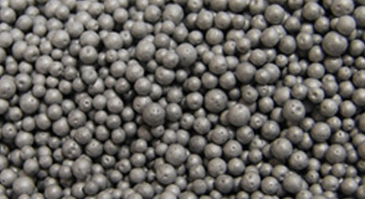
Blown-in insulation:
Blown-in insulation is made up of loose fibers or particles of insulation material that are blown into the cavity using special equipment, until the cavity is completely full.
This method is affordable, quick and easy to install, and can provide good sound insulation. However, it is not suitable for homes located in areas with high wind speeds, as the wind driven rain can work its way into the cavity.
If this happens and you have fibreglass, or mineral wool installed in your cavities, you’ll likely have big problems with damp. EPS beads aren’t perfect either, but they are, in my opinion, the best option with the least risks.
Materials used for blown-in insulation:
The most common materials used for blown-in insulation in the UK are EPS (expanded polystyrene) beads, fiberglass, and mineral wool.
EPS beads are basically the same as your polystyrene packaging but in bead form and the ones used in cavities are now typically grey in colour.
Fiberglass is made from molten glass that is spun into fibers and treated with fire retardants. Mineral wool is made from natural or synthetic minerals, such as rock wool or slag wool.
Benefits of blown-in insulation:
Blown-in insulation is quick and easy to install, providing decent sound insulation and a decent R-values. Unfortunately, there isn’t a good natural insulation that isn’t affected by moisture, that’s suitable for cavity fill insulation, at present.
How to install blown-in insulation
Blown-in insulation is installed using a special machine that blows the insulation material out of the back of a truck directly into the cavity through small holes drilled in the wall.
The installer must ensure that the insulation is evenly distributed and fills all gaps and voids, if it is to work correctly. EPS beads are mixed with an adhesive as it enters the cavity so that it forms a large single piece once the adhesive sets.
Spray foam insulation:
Spray foam insulation is made up of a mixture of two chemicals that combine to create a foam-like substance.
This foam is sprayed into the cavity, where it expands and hardens, filling all gaps and voids. This method provides excellent insulation, air sealing, and soundproofing.
However, if you’re a regular on my site, you’ll know that I’m not a fan of spray foam insulation. It can damage the walls of your home if it expands too much, it off gasses some pretty nasty chemicals and if there’s a problem with the install it can’t be removed without taking the wall down.
Spray foam insulation in your walls or loft area could make your home un-mortgageable if you ever decide to sell it!
Materials used for spray foam insulation:
Spray foam insulation is made up of two chemicals, isocyanate and polyol resin, which are mixed together and sprayed into the cavity using special equipment.
Benefits of spray foam insulation:
Spray foam insulation does provide excellent insulation, air sealing, and soundproofing.
It's also more energy-efficient than other types of cavity insulation. But I still wouldn’t recommend it for the reasons given above.
How to install spray foam insulation:
As with the previously mentioned forms of cavity insulation, spray foam insulation is installed using special equipment that mixes the two chemicals as they’re being sprayed into the cavity.
As it meets the air it starts to expand and then forms a crust on the surface. It is important to note that spray foam insulation requires professional installation, as the chemicals used can be hazardous.
Conclusion:
If your home is suitable and, in the case of cavity insulation, not in an area of high wind driven rain exposure, then adding insulation to the external walls of your home will make a big difference to its overall energy efficiency. It'll make your home cheaper to heat and a more pleasant place to be.
But it must be done correctly, using the right materials for your house type, you should seal up draughts and holes in the structure, while maintaining the controlled ventilation (trickle vents, extract fans, etc.) to avoid condensation and stale air build up.
There are several different types of wall insulation available, each with its own benefits and drawbacks.
When choosing insulation for your home, it's important to consider factors like the age of your home, R-value, ease of fitting, location, cost and environmental impact.
Blown-in EPS insulation is probably the most popular option for cavity walls as it offers good thermal performance and energy efficiency at a good price. While also minimising the risks from damp ingress.
Internal and external wall insulation are also great choices if you have solid walls. If done right, with natural insulation such as wood fibre, you can maintain the breathability.
No matter which of the different types of wall insulation you choose, proper installation is key to ensuring its effectiveness. Be sure to follow my other articles showing how to install your insulation the right way and seal any gaps or air leaks to maximise the insulation's performance.
Investing in one of the different types of wall insulation is a great way to improve your home's energy efficiency, reduce your carbon footprint, and save money on your energy bills in the long run.
If you enjoyed this article and would like to receive regular tips on how to make your older home more energy efficient, sign up for my newsletter below . You'll also receive a FREE copy of my "Simple Energy Reduction Tips" ebook.
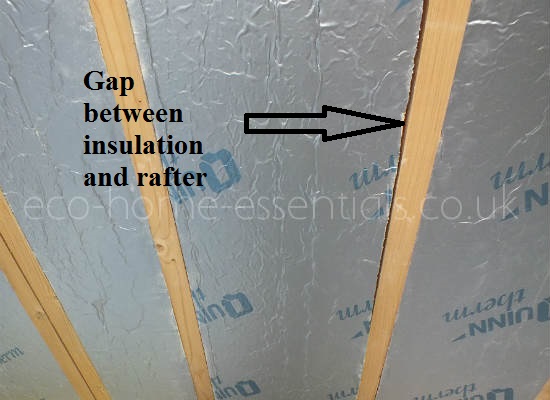
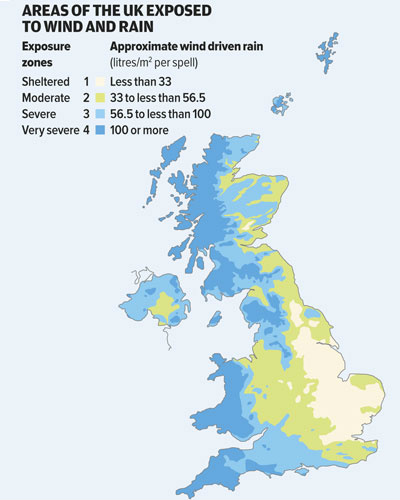
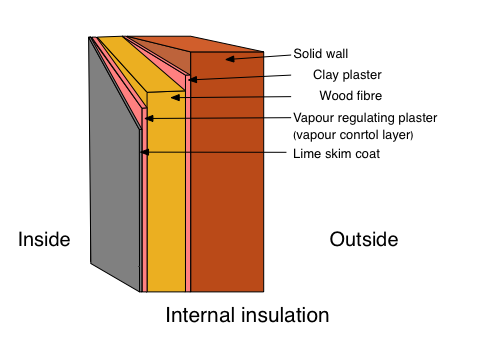
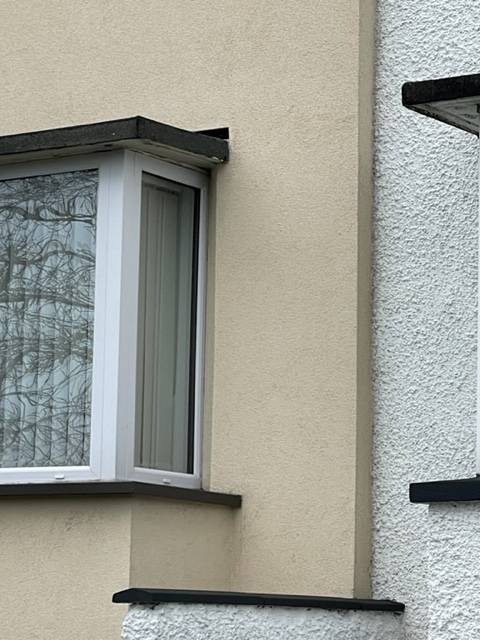
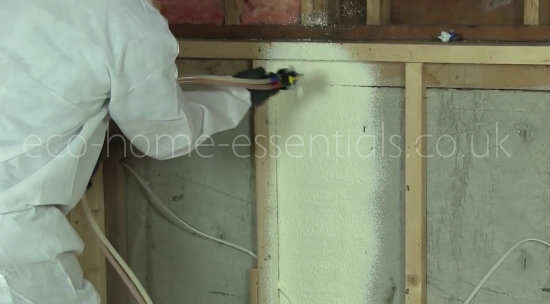







New! Comments
Have your say about what you just read! Leave me a comment in the box below.